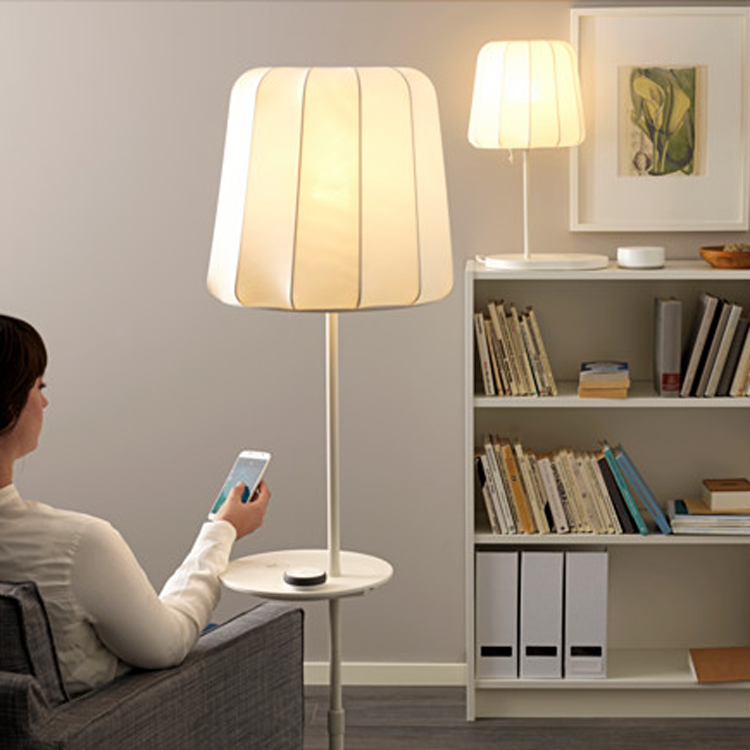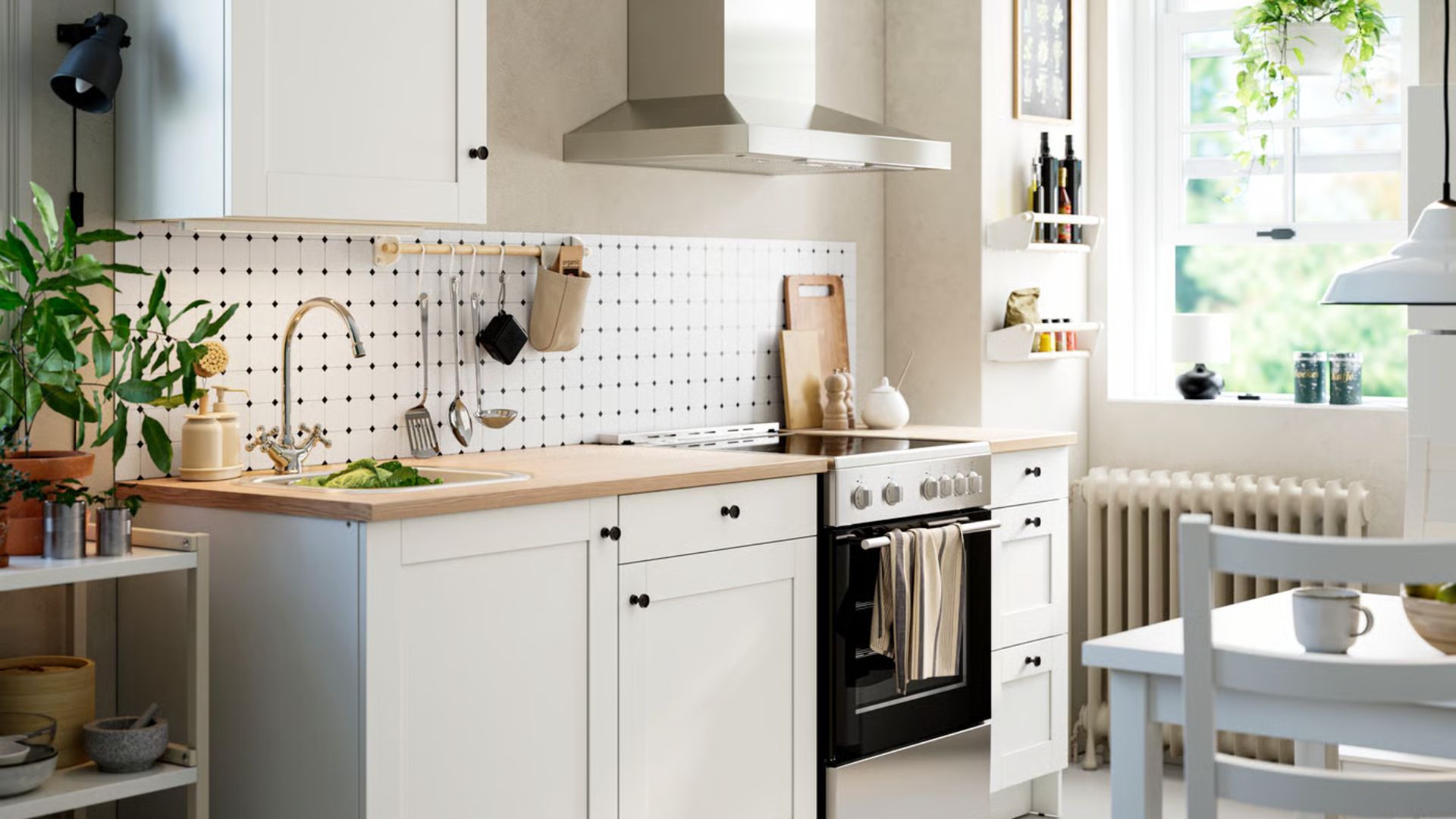Tom's Guide Verdict
A complicated setup and incompatibility with other smart-home systems make Ikea's Tradfri smart lighting kit not the brightest of bulbs.
Pros
- +
Tunable bulbs
- +
Comes with remote control
Cons
- -
Convoluted setup
- -
Doesn't work with other smart-home systems
- -
App is too simple
- -
Can't control lights outside your home
- -
Expensive
Why you can trust Tom's Guide
The company that brought you flat-pack furniture with funny names is now branching into smart-home devices. The Ikea Tradfri Smart Lighting Kit includes two bulbs, a remote control and a hub to connect the lights to the cloud so you can control them remotely. But these Swedish lights are pretty dim when compared with more established competitors.
Setup
As you might expect from Ikea, the instruction manual for setting up its smart lights comprises several pages of wordless diagrams, some more inscrutable than others.
Uniquely, the Ikea starter kit also comes with a remote control, so you won't need to open a smartphone app to turn the lights on or off. It also comes with a mounting plate so you can attach it to a wall, as you would with a light switch. (Philips also makes a remote control for its lights, but it costs $49.) The Ikea remote works with up to 10 bulbs, but unless you're trying to light a gymnasium, that shouldn't be an issue.
The control hub for the Ikea lights is much larger than the one for either the Philips kit or the Sengled kit, but that's because Ikea's hub has a built-in cable-management system; you can stow the unused Ethernet and power cords inside the hub. It's a nice way to hide any excess cord.
The Ikea starter kit first has you pair the remote with the hub, and then connect the bulbs to the remote. You do this by popping off the back cover of the remote and then pressing a small button on the remote while holding it within an inch of each light you wish to control.
I don't relish the thought of someone having to hold the remote over their head if they're trying to install these lights into a ceiling fixture or chandelier. You also need to pair one bulb at a time, making sure that only one light is turned on, if they're close together. It's much more of a pain than the processes for the Sengled and Philips kits, which let you do everything through their apps.

Ikea's Tradfri lights are rated at 900 lumens, which is higher than the Sengled bulbs (800 lumens) and the Philips lights (840 lumens). However, I didn't notice any difference in brightness when I had them all plugged in. Unlike with its competitors, you can change the Tradfri color temperature from warm (2200K) to warm white (2700K) to cool white (4000K).
Get instant access to breaking news, the hottest reviews, great deals and helpful tips.
App
The Tradfri app has a clean black-and-white interface that's reminiscent of the clean lines of the company's furniture. However, you don't go to Ikea looking for Ethan Allen; the app isn't nearly as full-featured as Philips'. While you can create groups of light and set timers for when the lights should turn on and off, that's about it. There's no vacation mode, nor are there any geofencing capabilities, so the lights can't turn on when they sense you're near home. Oh, and you can control the lights from your phone only if you're on the same network, so you can't turn them on or off if you're away from home.
Smart-Home Compatibility
Currently, the Tradfri lights don't work with any other smart-home system — not Alexa, Nest, IFTTT, Samsung SmartThings, nothing. That's a pretty big failing. However, the company has said that it is working to make its lights compatible with Alexa, Google Assistant and Apple HomeKit.
Additional Bulb Costs
Ikea's Tradfri bulbs cost $17.99 each for the color-tunable white bulbs and $11.99 for the non-tunable white bulbs. That's less expensive than Philips' replacement bulbs (about $13 each), but more than Sengled's, which are just $9.99 each.
Bottom Line
It's intriguing that Ikea is getting into the smart-home space, but its initial effort falls apart as easily as one of its particle-board beds after one too many moves. While I like that it includes a remote and that you can change the color temperature, its lack of compatibility with any other smart-home system and its high price make this set not so bright.
Credit: Ikea

Michael A. Prospero is the U.S. Editor-in-Chief for Tom’s Guide. He oversees all evergreen content and oversees the Homes, Smart Home, and Fitness/Wearables categories for the site. In his spare time, he also tests out the latest drones, electric scooters, and smart home gadgets, such as video doorbells. Before his tenure at Tom's Guide, he was the Reviews Editor for Laptop Magazine, a reporter at Fast Company, the Times of Trenton, and, many eons back, an intern at George magazine. He received his undergraduate degree from Boston College, where he worked on the campus newspaper The Heights, and then attended the Columbia University school of Journalism. When he’s not testing out the latest running watch, electric scooter, or skiing or training for a marathon, he’s probably using the latest sous vide machine, smoker, or pizza oven, to the delight — or chagrin — of his family.
-
jonvj8 Actually the Tradfri DOES WORK with the Wink hub. This includes power and dimming and Wink robots/scheduling. I’ve been using them with the Wink app for a few weeks now. You have to select GE bulb or Generic Zigbee bulb in the Wink app’s ‘add a bulb’ setup screen. Haven’t tried RGB tradfri or warm/cool bulbs. Just the white bulbs. Perhaps they would work with other smart home systems as well if you chose GE or Generic Zigbee.Reply -
matt.brain Ignore the hub (for the time being) but get the bulbs if you have Philips Hue. As of Aug 2017 they are Hue compatible (and if you have old ones you can update them to be Hue compatible, with the aforementioned hub and remote). I have recently bought 28 of the GU10 bulbs (combination of fixed and variable white) and they are significantly cheaper that Philips with very similar performance.Reply

